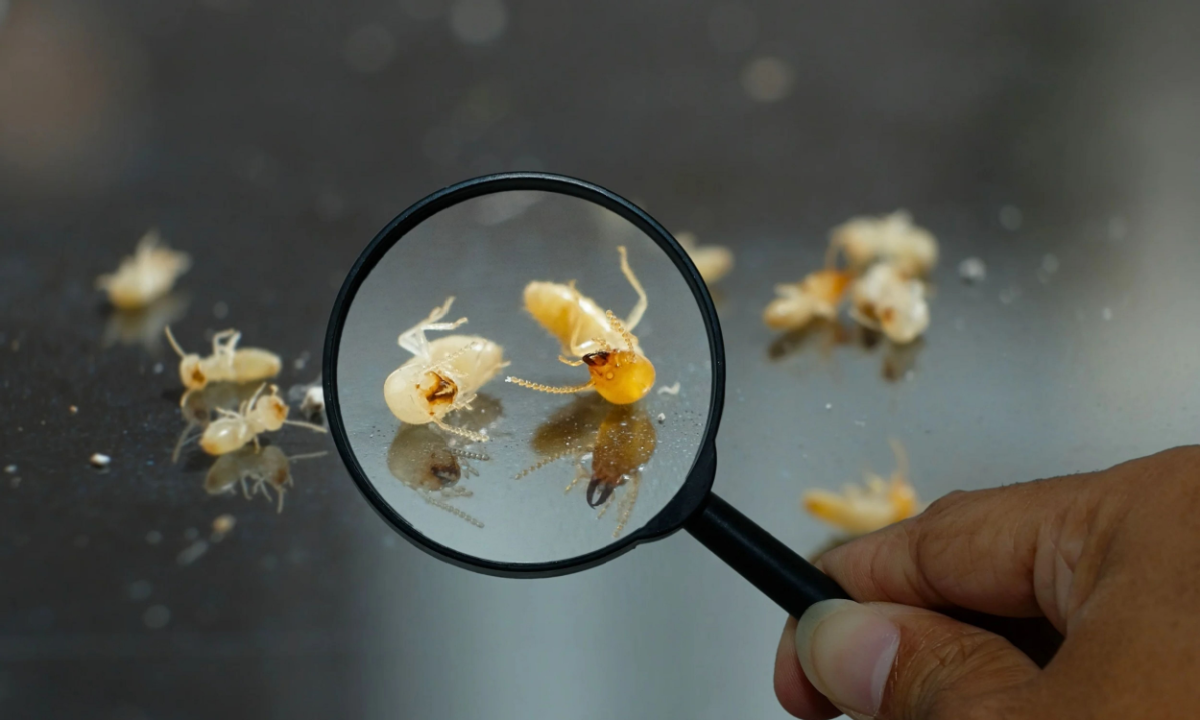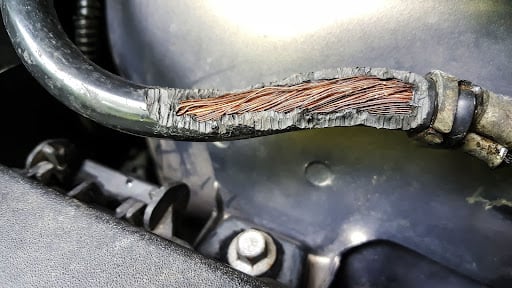As the seasons shift annually from warm to cold, a familiar and unwelcome guest often enters your New Jersey home. And its name alone should make you want to take action so you don’t encounter it: the stink bug.
Known for their distinct shield-shaped body and their unpleasant odor when threatened, stink bugs are more than just a nuisance; they pose significant challenges to homeowners and gardeners alike.
Here’s some insight into these pesky winter bugs and effective strategies to keep them at bay.Request a Free, No-Obligation Quote
Request a Free, No-Obligation Quote
Unmasking the Stink Bug: A Closer Look
The brown marmorated stink bugs, or Halyomorpha halys, are not just ordinary household pests. With their mottled brown color, shield-shaped body, and long legs, they can be easily identified.
This uninvited guest made its grand American debut in Allentown, Pennsylvania, in September 1998—and it’s believed to have arrived quite by accident. But don’t let its unassuming arrival fool you; this bug is a voracious feeder known to feast on over 100 plant species, including numerous crops.
By 2010-11 rolled around, orchards throughout the Eastern United States were battling this pest all season long. The impact? Staggering. In the Mid-Atlantic alone, apple crops suffered a loss of $37 million in 2010. Some stone fruit farmers faced nightmarish scenarios, losing over 90% of their harvest.
The brown marmorated stink bug’s appetite wasn’t confined to the U.S. It ventured further, reaching the nation of Georgia and Turkey, where it wreaked havoc on hazelnut production.
Today, this intrepid bug has firmly established itself in various parts of North America and has even set its sights on new territories – Europe and South America are its latest conquests. Its spread is a reminder of the delicate balance within ecosystems and the impact that one small creature can have on global agriculture.
These pests are particularly notorious for their survival tactics. When the weather cools, they seek warmth, often inside our homes, garages, or sheds. And when threatened, they release a potent odor as a defense mechanism. But it’s not just their smell that’s a concern; their feeding habits can wreak havoc on various crops, including fruits and vegetables, which can cause major issues for those who do indoor gardening over the colder months.
And because they feed on fruits and vegetables, they are a significant agricultural threat, known to damage a wide range of crops. They can become a persistent issue in our homes, especially during colder months, as they seek shelter. Understanding their behavior is the first step in effectively managing their presence.
To effectively manage these pests, it’s essential to understand their lifecycle. Stink bugs undergo three stages: egg, nymph, and adult. The eggs, laid in groups on the underside of leaves, hatch into nymphs.
These nymphs go through five stages, growing larger with each molt until adulthood. The adult stink bugs are the ones that often invade our homes, seeking warmth.
Combating Stink Bugs Effectively: Your Action Plan
Following are some tips to remove these pests from your New Jersey home and prevent them from returning.
Embrace Prevention as Your First Line of Defense
Preventing stink bugs from entering your home is more effective than dealing with an infestation.
Start by sealing any cracks around windows, doors, and siding. Repairing damaged screens is also crucial. Additionally, consider your outdoor lighting; these bugs are attracted to lights, so minimizing their use can help reduce their presence.
Preventative pest control is always much more effective and affordable than having to remove these pests later.Request a Free, No-Obligation Quote
Request a Free, No-Obligation Quote
Natural Repellents: A Safer Approach
In your quest to deter these pests, nature offers some excellent solutions.
Mint spray, made from water and mint oil, acts as a natural deterrent. Similarly, diatomaceous earth can be sprinkled around potential entry points, creating a barrier against these invaders. Essential oils like citrus, lavender, and eucalyptus also serve as effective repellents, adding a pleasant aroma to your home while keeping stink bugs away, as well as cockroaches.
The Art of Mechanical Removal
Sometimes, the simplest methods are the most effective. Vacuuming stink bugs is a practical way to remove them without triggering their notorious smell. Hand-picking (with gloves, of course) is an option for smaller invasions. It’s a direct approach that, while time-consuming, can be surprisingly effective.
When to Consider Chemical Treatments
While we focus on environmentally friendly methods, certain situations may call for chemical treatments. Insecticidal soaps can target stink bugs without harming other beneficial insects. However, they should be used sparingly and as a last resort. Always follow label instructions to minimize any potential environmental impact.
Professional Pest Control: When to Call in the Experts
Professional pest control services from Anchor Pest Control can provide the expertise and efficiency needed for severe infestations or when DIY methods fall short.
Specialists in pest control can assess the situation and implement integrated pest management strategies, combining mechanical, biological, and chemical methods for a comprehensive solution.
The Bottom Line: A Balanced Approach to Stink Bug Control
Dealing with stink bugs is about striking a balance. It involves being proactive with preventive measures, using natural repellents, and knowing when to seek professional help.
By understanding their behavior and lifecycle and considering the environmental impact of control methods, we can manage stink bug populations effectively, keeping our homes and gardens safe and comfortable.
For a personalized approach to stink bug control and expert advice, feel free to reach out to us for a free quote. Together, we can ensure that these uninvited guests don’t overstay their welcome in your home.
FAQs
What attracts stink bugs to New Jersey homes?
Stink bugs are drawn to homes for warmth, especially during cooler months. They are also attracted to light.
Are stink bugs harmful to humans or pets?
Stink bugs are not harmful to humans or pets but can be a nuisance due to their smell and large numbers.
Can stink bugs cause damage to my home?
While they don’t cause structural damage, stink bugs can invade homes in large numbers and spoil indoor environments.
What natural remedies can repel stink bugs?
Mint spray, diatomaceous earth, and essential oils like citrus, lavender, and eucalyptus are effective natural repellents.
When should I consider professional pest control for stink bugs?
Consider professional pest control if you have a severe infestation or if DIY methods are ineffective.Request a Free, No-Obligation Quote



